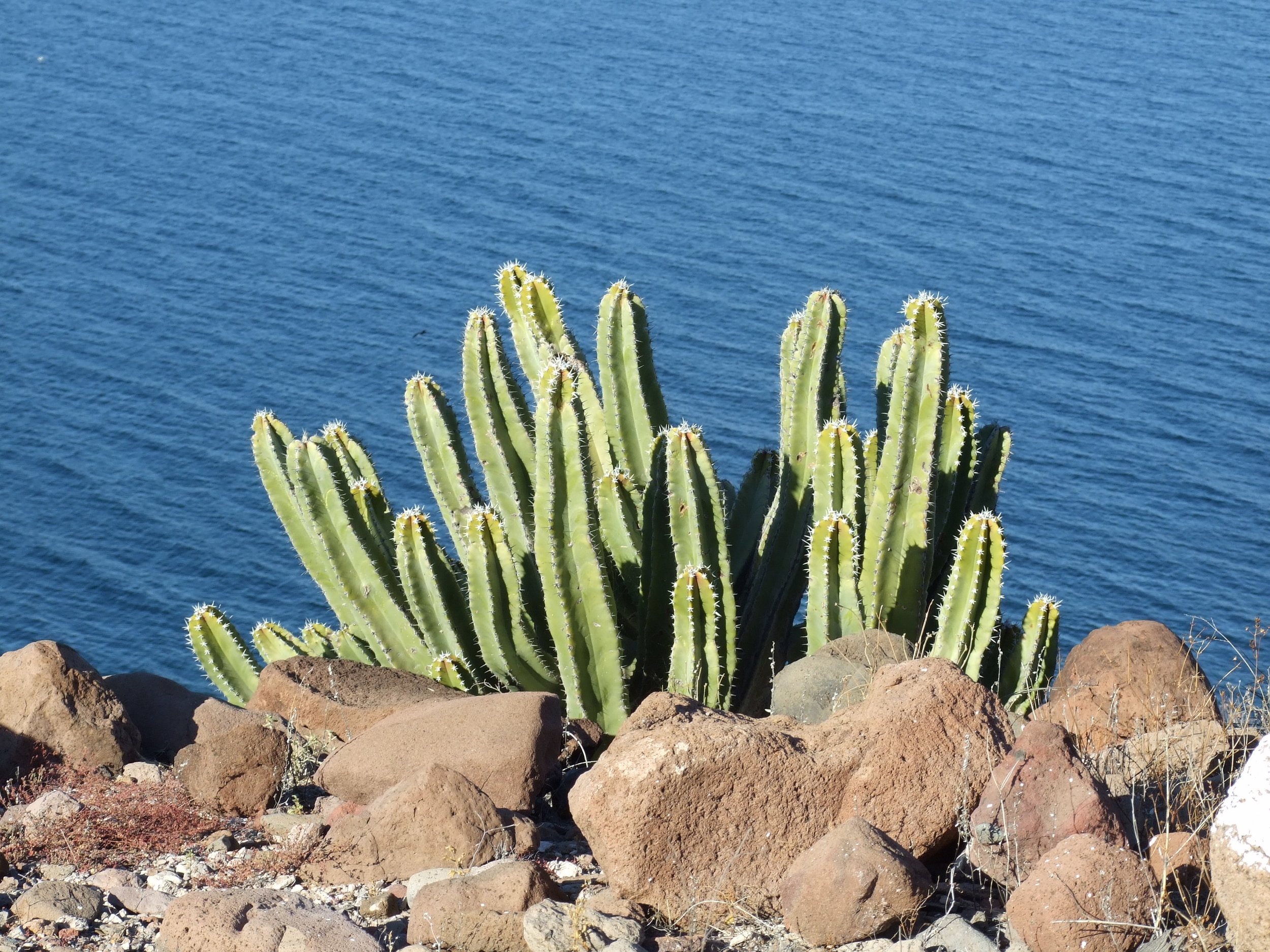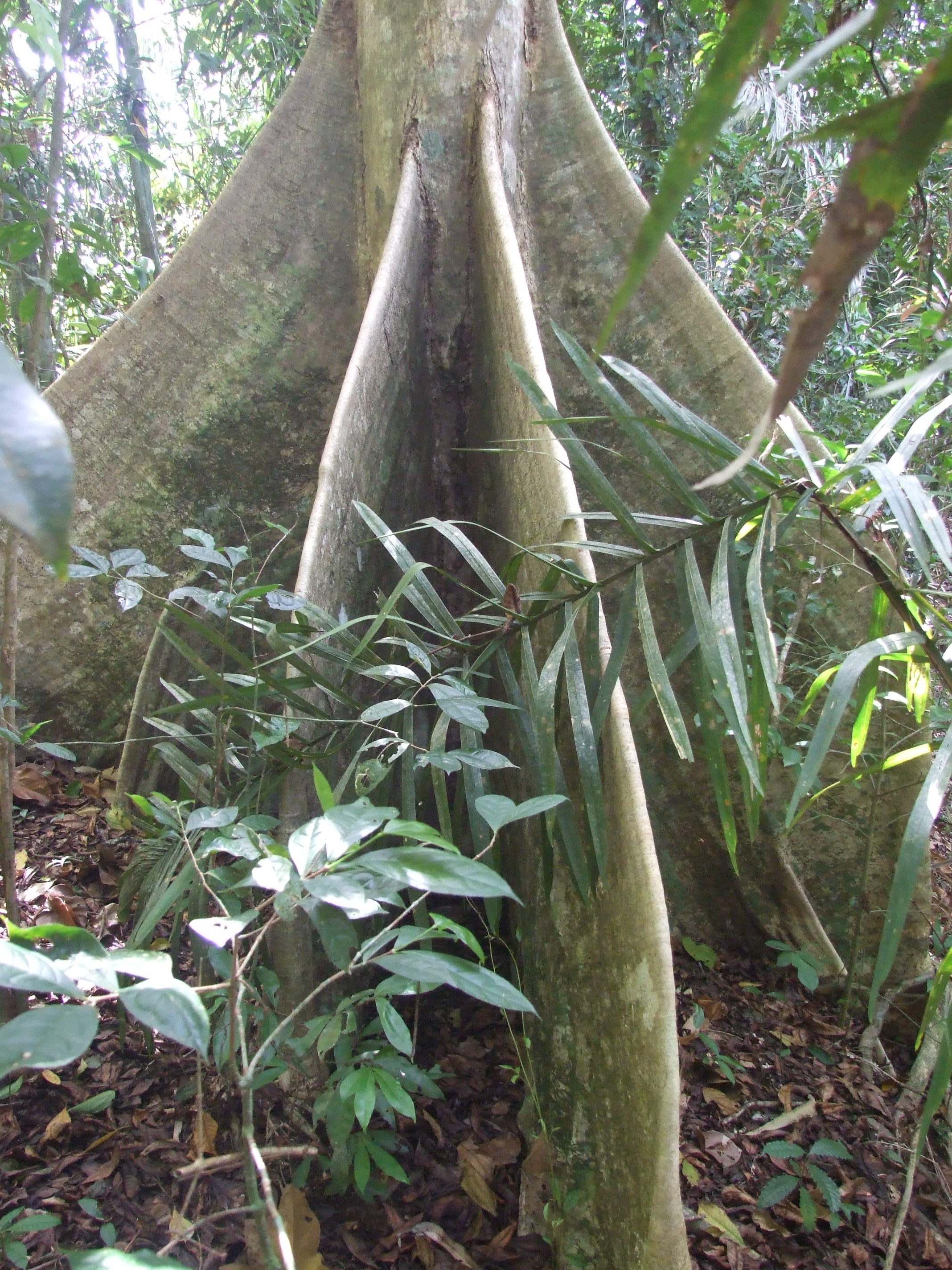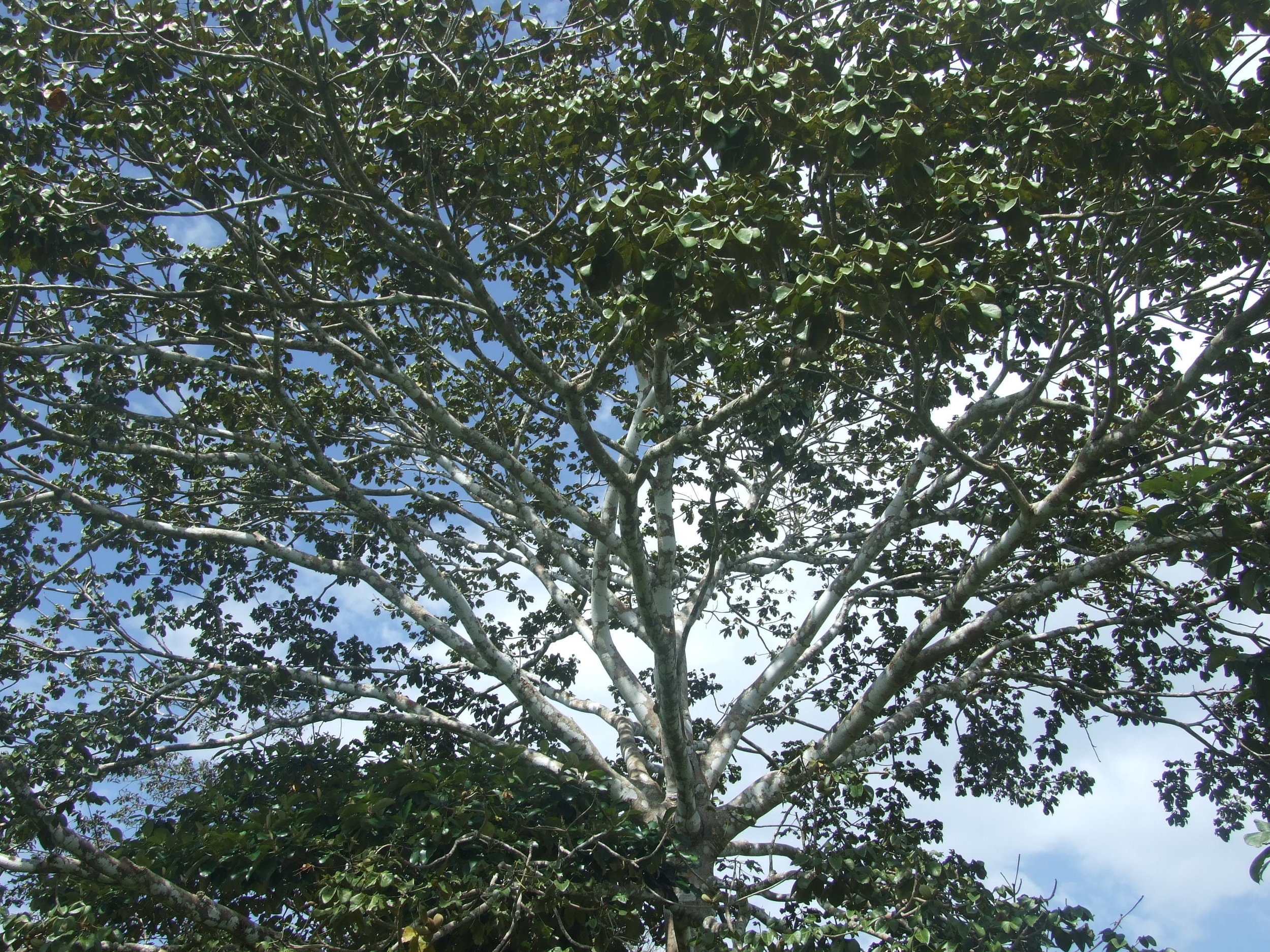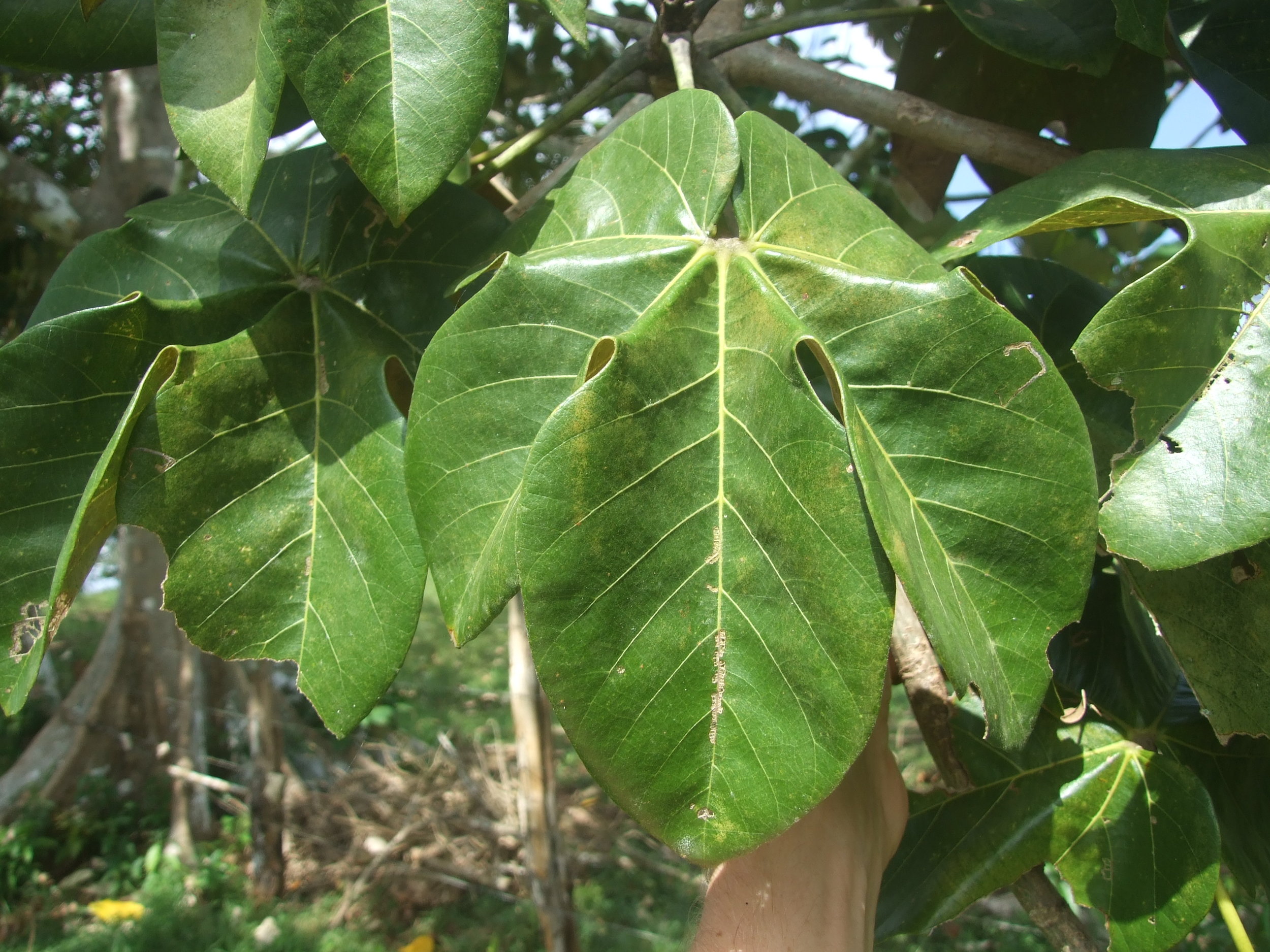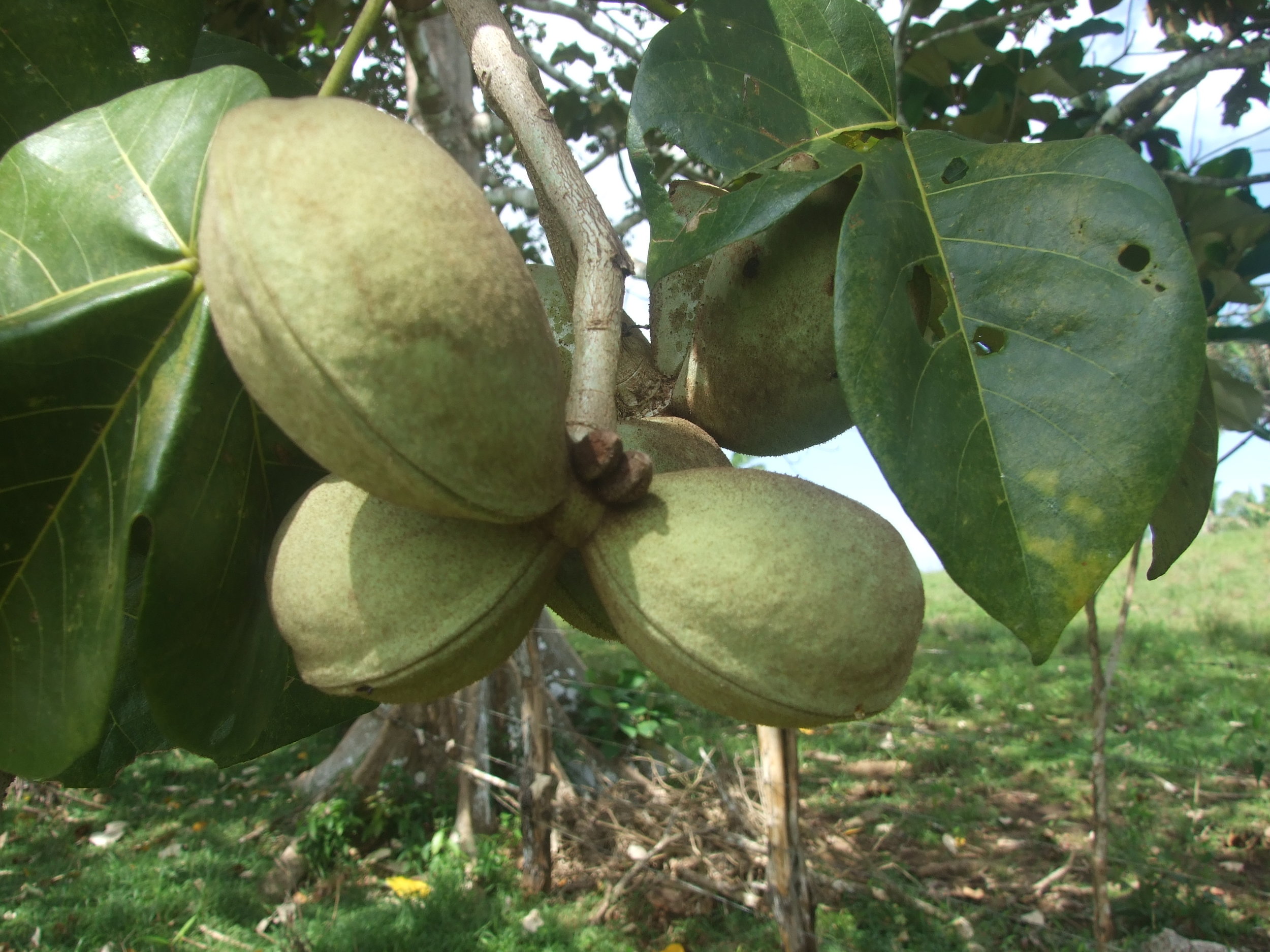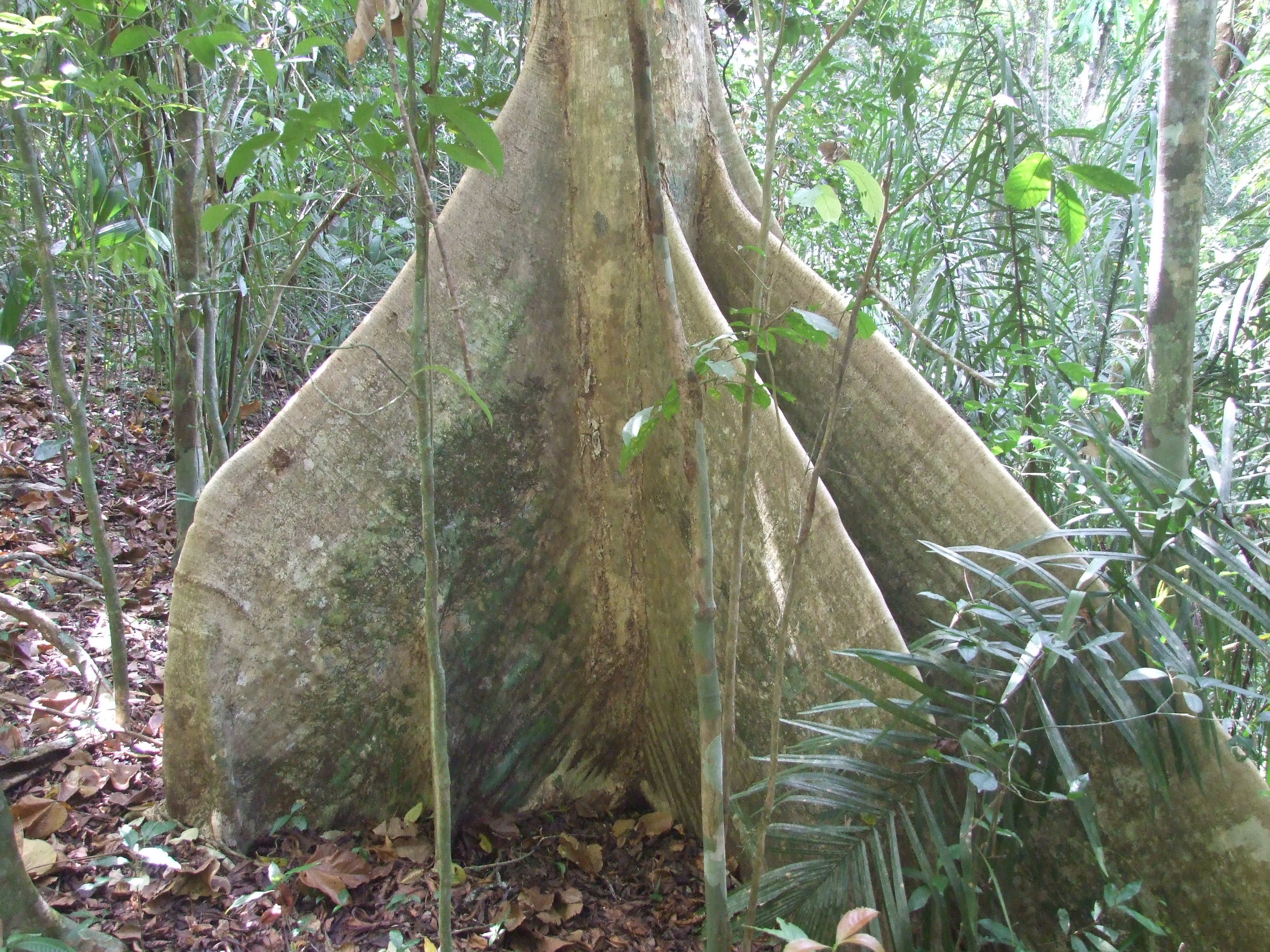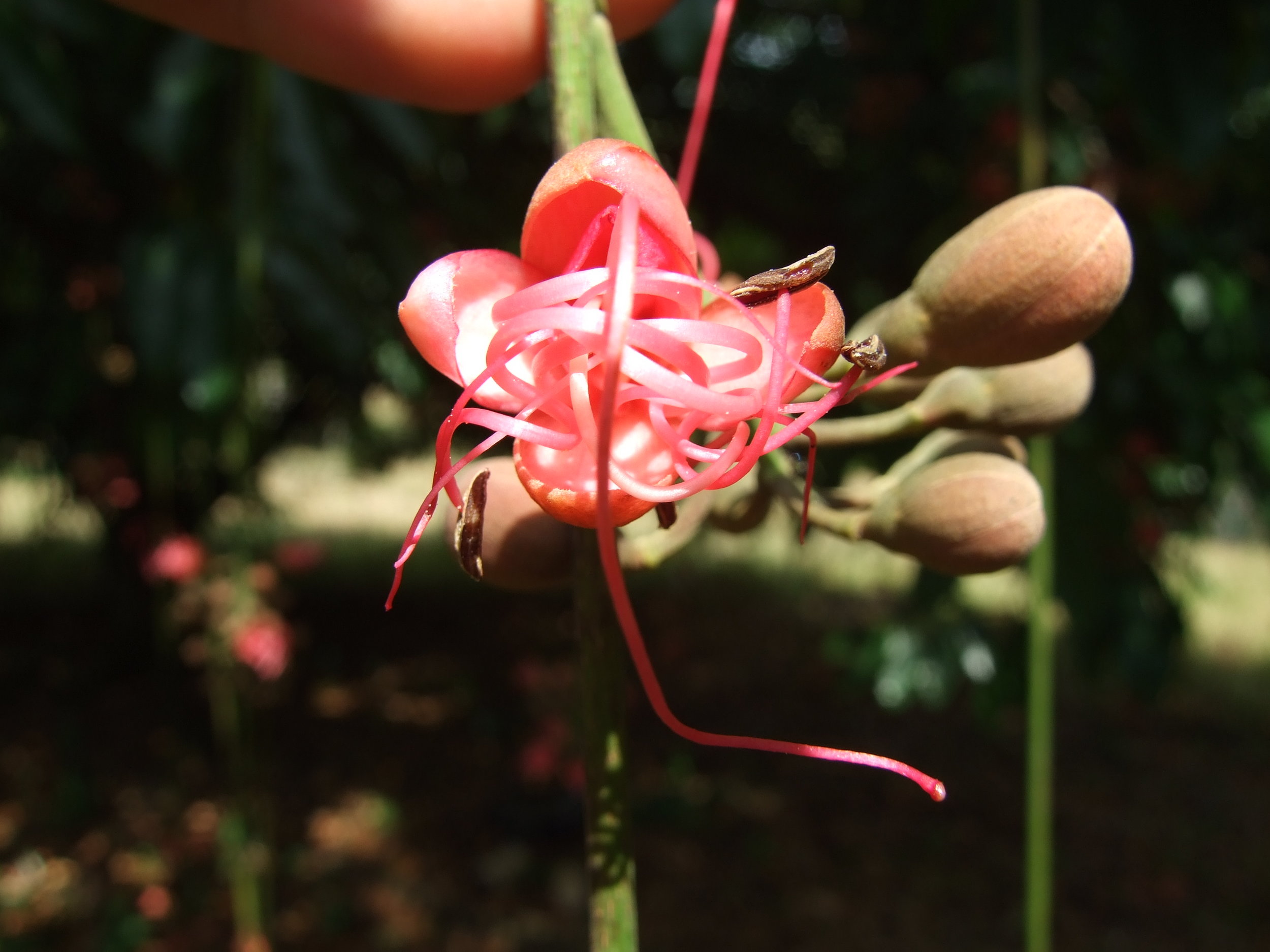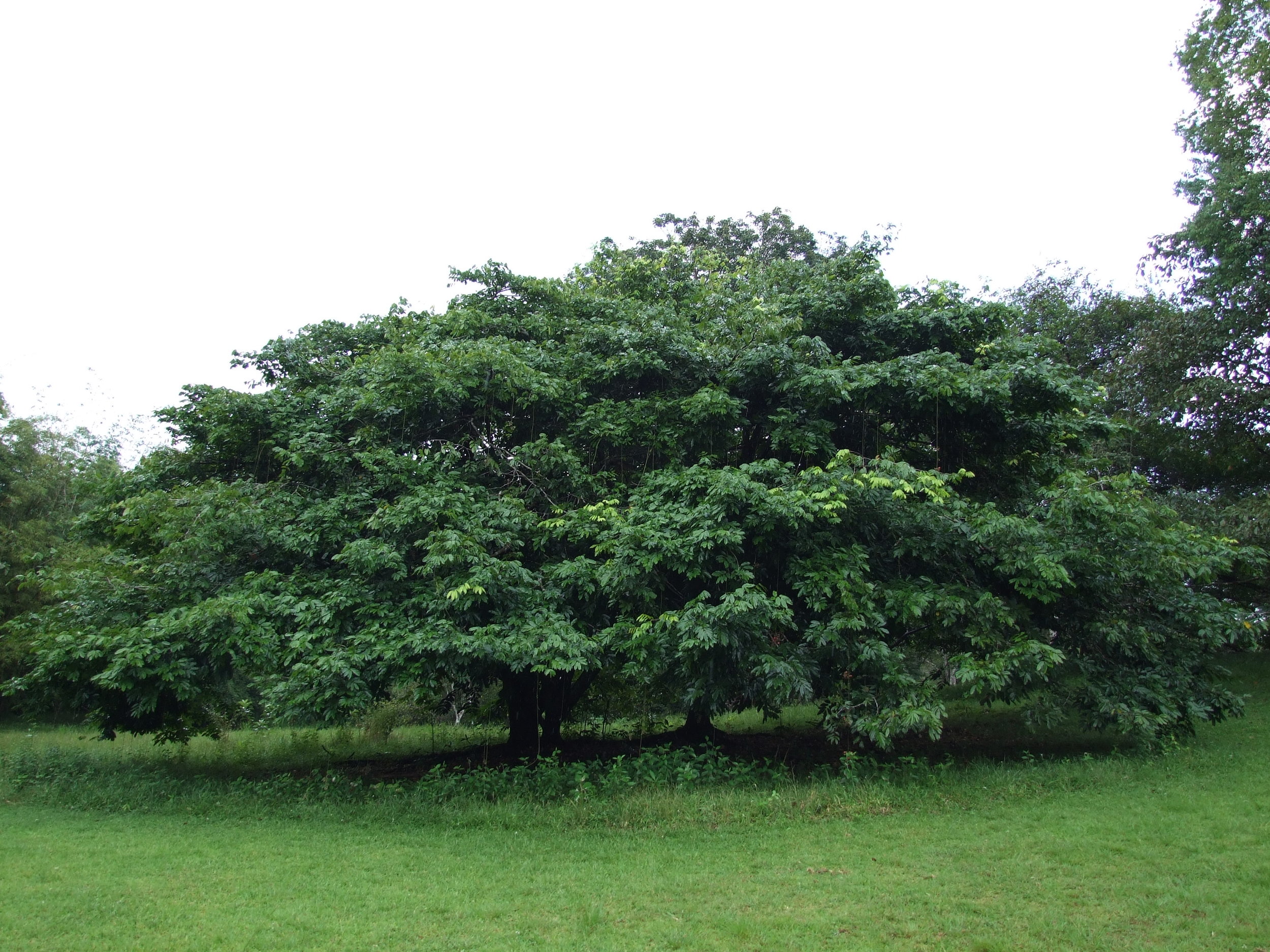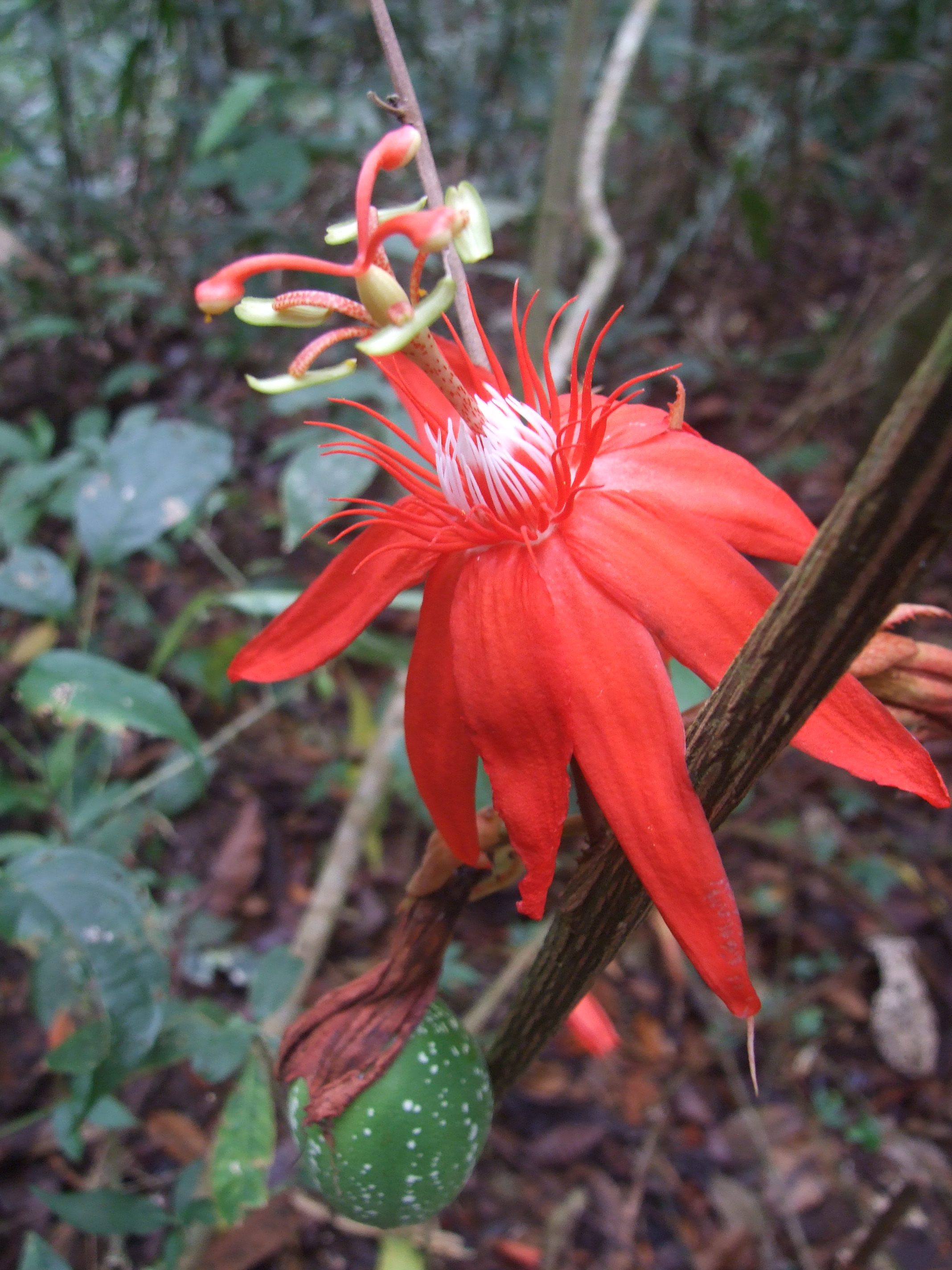Eperua falcata - Bootlace tree
BACKGROUND
Endemic to the humid, lowland forests of Guyana, northern S America, E. falcata remains largely unknown outside its place of origin. The tree can make a giant, robust forest tree, with a massive spreading canopy. Flower clusters dangle at the end of long, pendant stems, which hang down in abundance, forming a fringe below the canopy. Each inflorescence forms a fairly incredible, deep mauve-pink, woody pod containing a single seed. The pod is reminiscent in shape to a machete blade, or even more accurately, a scimitar. The pods explode upon opening, flinging their seed up to 100 feet.
USES AND ETHNOBOTANY
The resin may have slight bactericidal and antifungal properties, which account for its use as a cicatrizant (a substance that heals by inducing scarring). The resin from the bark is placed on warm leaves and tied around cuts and sores, ulcers etc as a poultice. The resin is used as a cicatrizant to heal wounds. The bark is decocted as a dental analgesic. The bitter bark is used as an emetic.
The wood yields an oil which is used as an ointment for rheumatism and to treat wounds[
The tree was considered to be the most beautiful flowering legume by the renowned Brazilian botanist Dr. Adolpho Ducke.
Artabotrys hexapetalus - Ylang-Ylang vine
Artabotrys hexapetalus is a sprawling shrub / vine in the Annonaceae family originating in India. The plant grows like a sprawling shrub that will turn in to a vine if it is given a support structure. Although not apparent in the photos, the branches have hook-like protrusions (like Una de Gato, Unicaria). These aid the sprawling branches in climbing.
Artabotrys hexapetalus leaf and fruit.
Annona spraguei
Annona spraguei is endemic to Panama and endangered in the wild. I have collected seed from wild stands in Soberania National Park, outside of Panama City in Central America.
The fruit is about the size of a fist, with a sweet edible pulp and numerous seeds. The fruit looks like a smaller version of Biriba (Rollinia deliciosa) only smaller with thinner, longer protuberances.
Rhamnaceae, Zizyphus mauritiana, Indian Jujube
Jujube is one of the five primary fruits in China, having been cultivated thereabouts for 4,000 some odd years, probably longer. The fruit is very common in parts of Asia, and increasingly so in the Medeterranian. The tree is best adapted to dry tropical climates and can be found throughout the tropics, although it is not very common outside of Asia.
The tree can reach 12 meters in height, although most of the ones I've encountered, propagated by approach grafting, are smaller, sprawling shrubs. In dry, colder areas the tree doesn't typically surpass 4 meters in height.
The Indian Jujube (Z. mauritania) and the Chinese Jujube (Z. jujuba) can be distinguished by the underside of the leaves. The underside of the Indian jujube leaves is covered with an almost cream colored fuzz. The fruit is usually the shape and size of a olive, although improved Chinese varieties can be larger than 6 cm in length. Each fruit contains a stone with two seeds.
The Jujube can be consumed in numerous ways: ripe or unripe, cooked, in sweets and jams, breads, cheeses, and a butter is prepared with the pulp. Juices are also made. In order to dry the fruits, one must wait until the process is initiated on the tree, the fruit ripens, becomes soft and then dries. The soft fruit has a higher concentration of sugars. Dried fruits are common, and can be conserved and consumed like raisins.
The wood is very strong, often used to make agricultural implements, also used to make a top quality charcol. The tree is commonly used as a living fence and windbreak in arid regions. Leaves are used as food for silkworms. The bark is used for tanning. The leaves and fruit are an excellent animal forage.
There are numerous superior grafted varieties of Chinese Jujube, including Lang, Li, Sui Men, Mu Shing hong, and Yu. There are over 125 known varieties of Indian Jujube in India, including "Gola", "Safeda", "Banarsi", and "Haichi".
High quality fruits contain up to 21% sugar, 1.5% protein, and are rich in calcium, fosforo and vitamin C.
The trees can be propagated by seed, approach grafting, cuttings and air layer.
Passiflora spp., Passiflora vitifolia
passiflora-soberania
Found this Passion flower variety in Soberania National Park, Panama. Need to go back and get a photo of the leaf.
passiflora-soberania2
Averrhoa bilimbi - Bilimbi
Bursera hindsiana (or epinnata) - Jatropha cuneata, Cercidium microphyllum, and Unidentified Shrub (forward right corner), Baja, Mexico
Two views of three small trees and a shrub. The trees are, starting from forward left hand corner in the photo directly below are: Matacora (Jatropha cuneata), Torote Prieto (Bursera hindsiana), and Palo Verde (Cercidium microphyllum).
Cactaceae, Lemaireocereus thurberi, Organ Pipe Cactus, Pitaya Dulce
The Pitaya Dulce is another common cactus on the Baja peninsula. The nocturnal flowers are cream colored and bloom at night, closing the following morning. The Cactus bears an excellent spiny fruit about the size of a tennis ball containing sweet, pink flesh, with a flavor reminiscent of watermelon. The fruit pulp can be eaten fresh, or dried in the sun for future consumption. My Baja California field guide by Norman Roberts includes these interesting anecdotes concerning the Pitaya Dulce: That "Missionaries' records indicate the natives were generally hungry except during Pitaya season. Then they gorged on this wild harvest, spending the entire season in a state of euphoria." And that "the Natives defecated at a particular spot on the trail, later gathering their own dried feces to collect the tiny black Pitaya seeds that had passed through their intestinal tract undigested. These seeds were then ground into a meal to be eaten as a pozole. This was called "the second Pitaya harvest". The missionaries were thoroughly disgusted with this harvest and castigated the Aborigines for it." Of course, the missionaries never successfully survived for thosuands of years in this seeminly inhospitable landscape, which doesn't give them much room for criticizing the native inhbitants for their methods of adaptation.
The book then includes a note about the superb daiquiris that can be made from the Pitaya fruit.
The flesh of the Pitaya is traditionally used as snake-bite medicine, applied directly to the afflicted site.

Cactaceae, Lophocereus schottii, Old Man Cactus, Garambullo, Senita
This, I am pretty sure, is a young Old Man Cactus, growing on a ridge overlooking Bahia Magdalena in Baja, Mexoco. When the cactus gets larger gray, hair-like spines grow out of the top, giving it a whiskered look, akin to an old man. The Cactus has small, pale pink flowers in the spring, which open at night, pollinated by bats and insects. Indians used to make tea from the cooked, sliced stalks to help relieve ulcerated stomachs. On the Mexican mainland slices of this species are sold in markets, used as a treatment for stingray wounds. The chopped stems were used to stupefy fish, also used as cattle forage.
The small red fruit was eaten by aborigines when other food was scarce.
